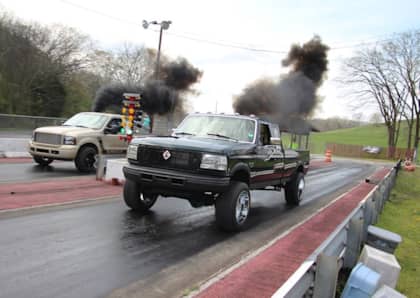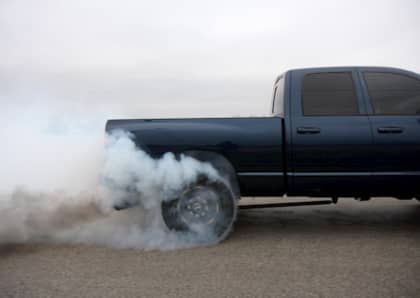Competition Diesel 101: A Beginner's Guide to Sled Pulling
So, you’ve bought your first diesel truck, and you’re thinking about hooking it to a sled. Be it at a county fair or a professionally sanctioned event, there is a lot to learn in a short amount of time if you want to make your first pull a success.
First and foremost, find out what the rules for your particular class are, because you’ll have to adhere to them in order to be allowed to compete. Typical guidelines for a stock-type diesel truck class dictate that the rear suspension can’t be blocked solid, and/or aftermarket turbochargers are illegal. You’ll also want to find out what the maximum allowable truck weight will be, and whether or not hanging weights or ballast are permitted.
Once you’ve taken a look at the rules, you can start prepping your truck accordingly. Then, you’ll need to find out which transmission gear you need to be in, whose hitch you’re going to borrow or buy, and even what tire pressure you should run. Quick Tip: To avoid the most common failure points such as driveshafts, U-joints and yokes, add a set of traction bars if you haven’t already.
While all of the above might not sound like much fun, addressing these items will pay off in the end. Trust us, this is how you can make your first pulling experience an enjoyable, worthwhile endeavor — and it might even land you in the winner’s circle.
RUN TRACTION BARS!
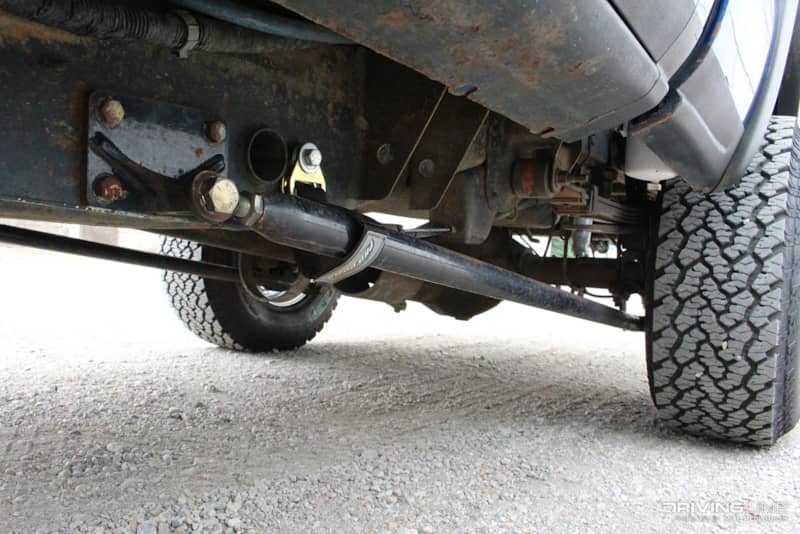
We can’t stress this enough. No matter if you have a mild-to-wild street truck, a puller, drag racer or legit grocery-getter, every type of diesel pickup benefits from having a quality set of traction bars on board. In addition to curbing axle wrap, traction bars control differential twist, driveshaft plunge and also lower the chances of U-joint, pinion yoke and drive shaft failure. Simply put, if you want to avoid the most common types of failures that occur during the course of a sled pull, you want traction bars on your truck.
Suspension Stops
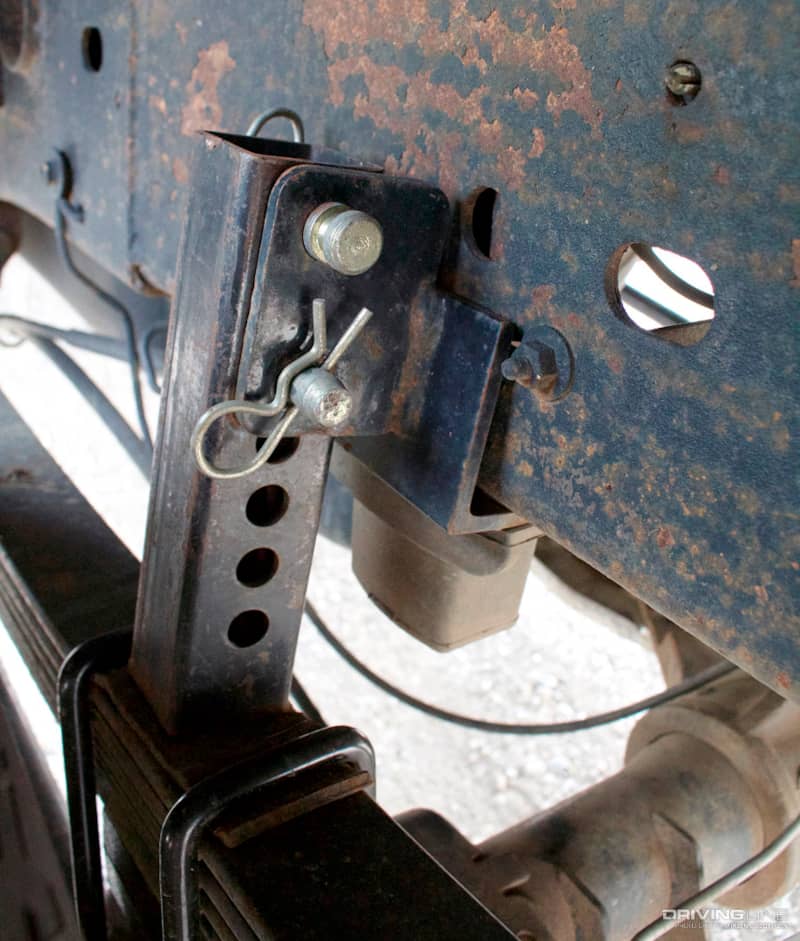
When permitted, it’s always wise to limit your truck’s rear suspension travel (again, check into your specific class’s rules to find whether or not you’re allowed to). As the weight box on the sled transfers forward, it gradually places more and more tongue weight on the rear of your truck. When this happens, the rear suspension will sag, and the front suspension will unload as a result (reducing front end bite).
Blocking the rear suspension keeps this from happening, not to mention that it keeps your hitch height as high as possible. Because a lot of pulling trucks double as daily drivers, adjustable suspension stops like the home built ones shown above allow full travel, no travel and everything in between.
Prepping the GM AAM 9.25 Front End
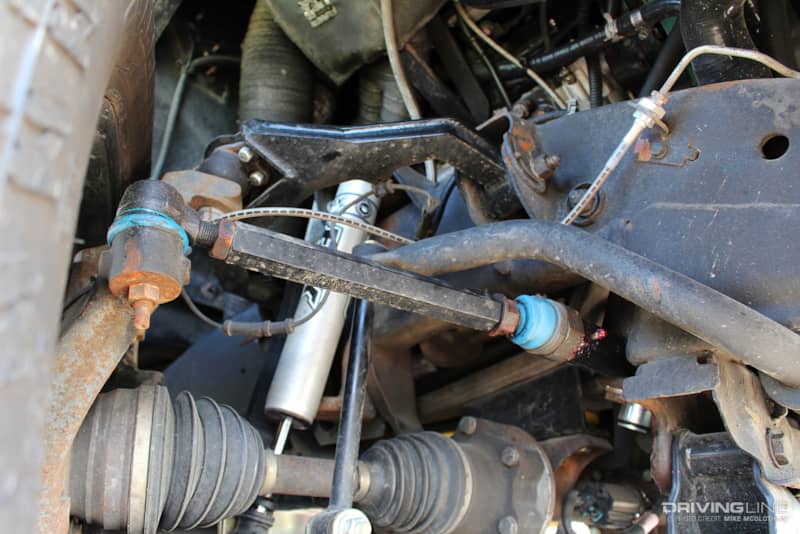
Due to the popularity of the Duramax/GM platform in truck pulling, we would be remiss if we didn’t offer a few pointers for those looking to compete with the AAM 9.25 IFS (’01-present Chevy and GMC 2500 and 3500 HDs). Most importantly, don’t crank up the torsion bars. The suspension and steering system is at its strongest when the CV shafts and tie rods run parallel to each other.
As a general rule of thumb, the less the angle the CV shafts, ball joints and steering links are exposed to, the stronger the AAM 9.25 is. In addition, make sure you’re running aftermarket tie rod sleeves or larger diameter tie rods. Otherwise, you’ll likely experience the dreaded toe-in that late model GMs are known to experience in four-wheel drive.
Gear Selection(s)
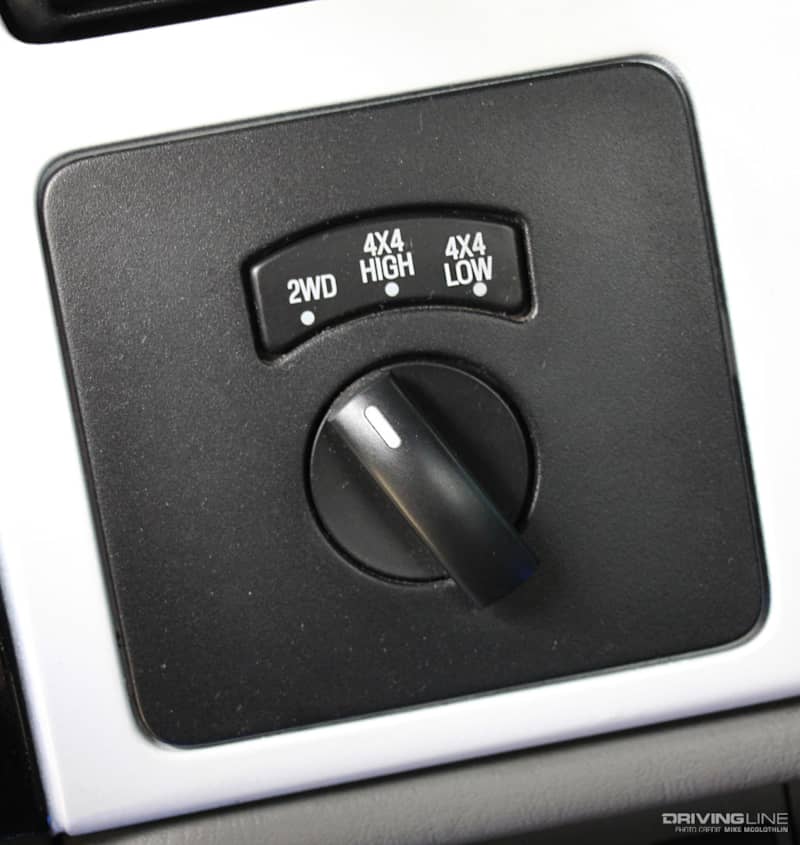
One of the most important parts of pulling boils down to your truck’s final drive ratio (transmission gear ratio x transfer case gear ratio x axle ratio). But, before you start multiplying, it’s important to know that selecting four-wheel-drive low range is easiest on the transfer case, and running in direct (1:1) is easiest on the transmission.
However, it’s also worth noting that most diesels making less than 600 hp won’t be able to utilize direct. For first timers, we recommend locking the transfer case in four low and finding out which transmission gear allows your truck to run between 20 to 25 mph. If you don’t find what you’re looking for in four low, bump up to four-wheel-drive high range and select a lower gear in the transmission.
Controlling Converter Lockup
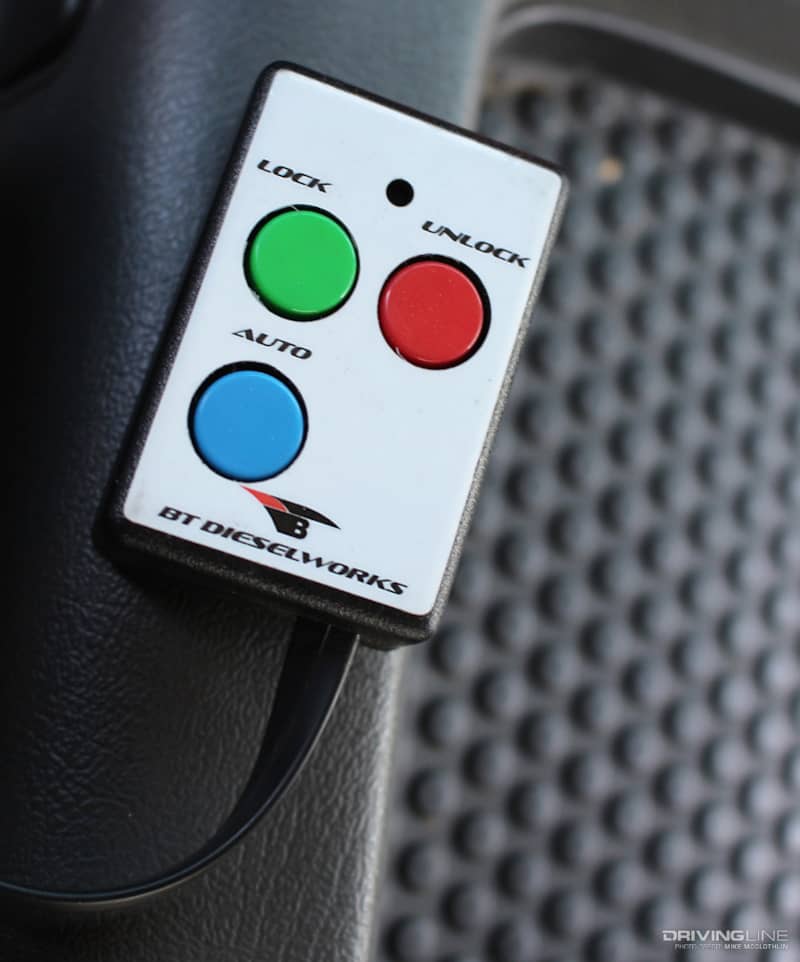
For trucks with automatic transmissions, a manual controller for torque converter lockup gives you full control over this vital function. During lockup, the converter clutch engages, essentially coupling the engine to the transmission’s input shaft. In lockup, slippage is minimized, and horsepower and torque being sent through the transmission are maximized.
As you can imagine, the ability to maximize the amount of power being sent to the ground is paramount during a pull, so a lot of drivers lock the converter as soon as their truck is up and moving. The biggest thing to remember with a manual lockup switch is to unlock the converter at the end of the track. Failure to do so will snuff the engine out.
Turbo Tech
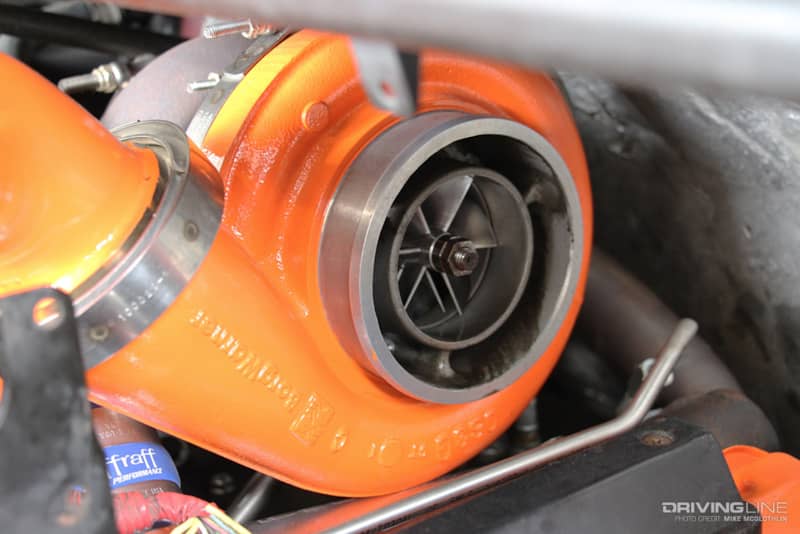
With the turbocharger being the key item to inspect for legality in diesel classes, be prepared to pop the hood and let the tech official take a look before you’re allowed to hook. And don’t be surprised if you’re asked to remove the air intake assembly from the compressor housing inlet of the turbo. Some techs will perform a visual inspection of the compressor wheel, while others will check the wheel’s inducer size via plug or caliper.
Weighing In
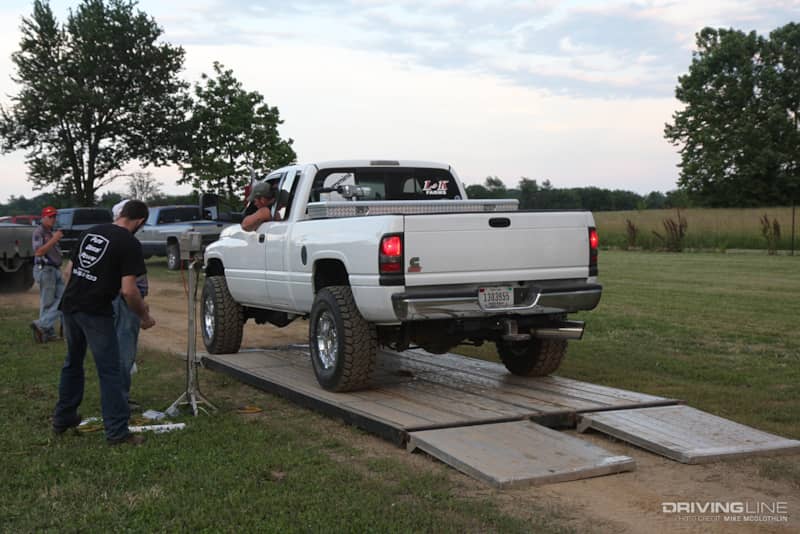
It pays to be as heavy as possible in truck pulling, but in order to make sure no one has a weight advantage, the overall heft of your truck (with you in the driver seat) will be measured. Typically, this is carried out by having competitors roll across a portable scale in an assembly line fashion. Most pulling classes for street-driven diesel trucks dictate an 8,000 or 8,500-pound maximum, with some classes allowing a 50-pound grace for trucks that show up a tad overweight.
Adding Weight
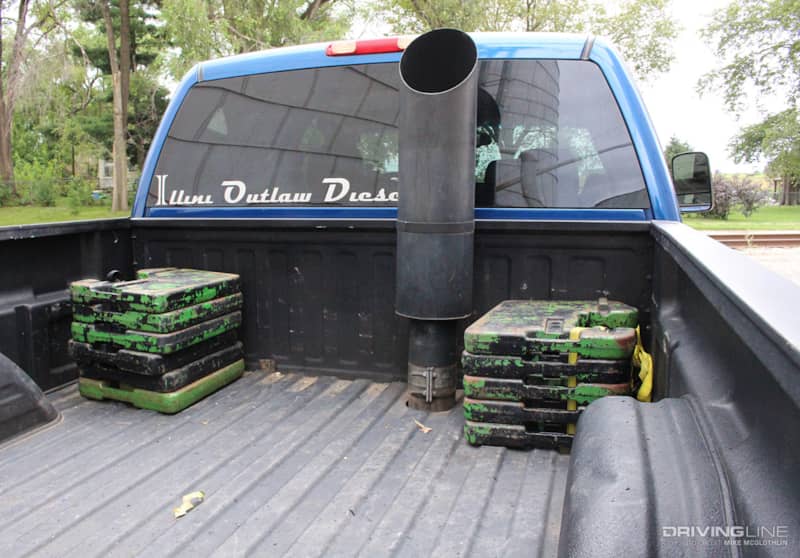
If you happen to weigh in under the class maximum, it behooves you to add weight until you reach it. While the ability to position weight forward of the front axle is the best spot to add weight (which in turn helps keep the front end digging), it may not be an option for you. Most street-type, entry-level style pulling classes don’t allow hanging front weights, but instead permit the use of ballast.
Adhering to ballast rules usually looks like this: suitcase weights safely secured in the bed. To be sure, if you’re signed up to compete against trucks that are equipped with hanging front weights (especially enclosed weight boxes), you’ve got your work cut out for you. Classes that allow hanging front weights are usually comprised of high horsepower, purpose-only pulling trucks.
Tire Selection
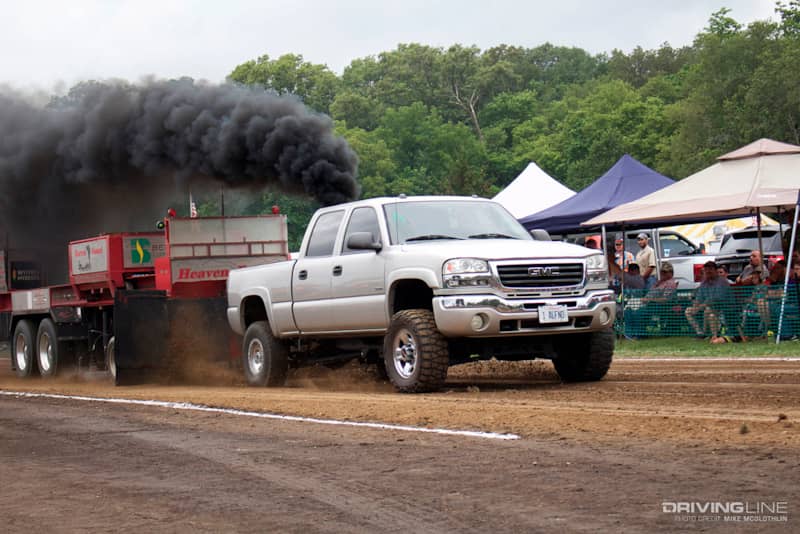
While weight, gear reduction and a properly configured suspension all contribute to a truck’s ability to hook up, the tire at each corner has the final say in traction. In recent years, the Nitto Mud Grappler has found a home in truck pulling. Its aggressive tread pattern, with a high void ratio and added sidewall bite, makes it very effective on both loose and tightly packed pulling tracks. We’ve also seen the Nitto Terra Grappler and Exo Grappler used with great success. Our advice is to run an all-terrain tire with full tread, or a mud terrain with at least half of its tread life left.
Air Down Up Front
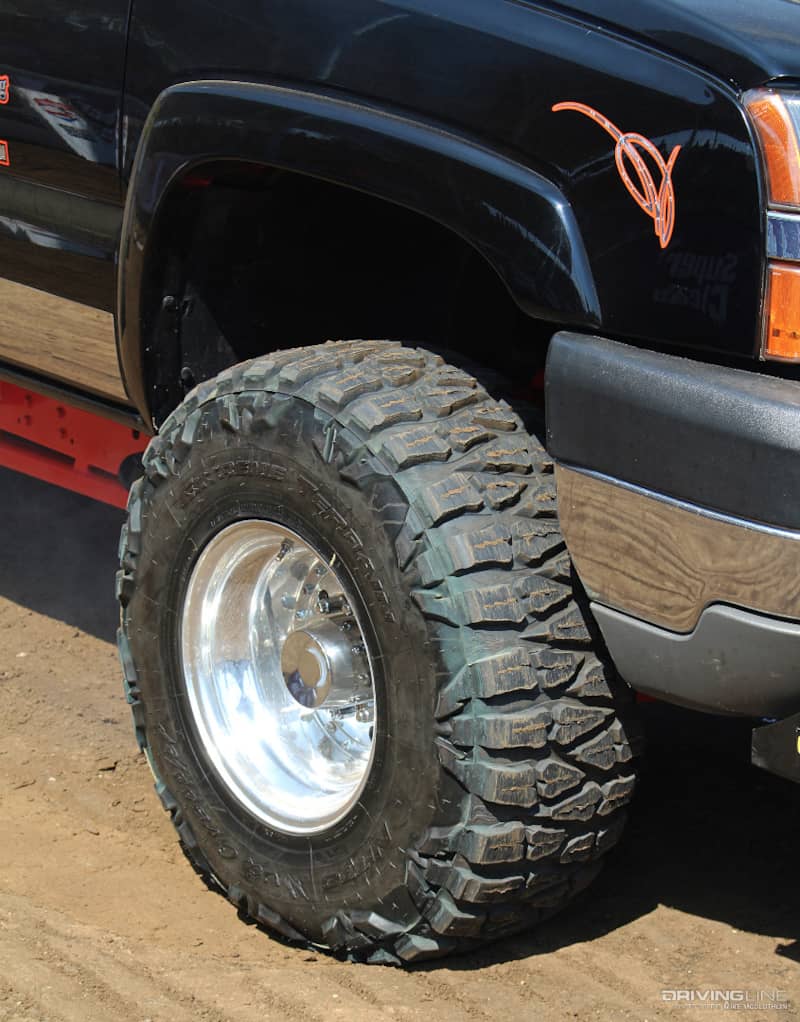
Dropping air pressure allows your front tires to cover more surface area, making it possible for them to take a bigger bite out of the track. The verdict is still out as to what the perfect air pressure is, but somewhere between 20 to 30 psi typically provides the type of footprint most pullers are after.
Due to the rear tires seeing the majority of the load from the sled, it’s best to run full air pressure out back. Leaving rear air pressure alone (or even adding some) will keep your hitch height as high as possible — which means less unloading of the front suspension, better bite at all four corners and ultimately a longer pulling distance.
How the Sled Works
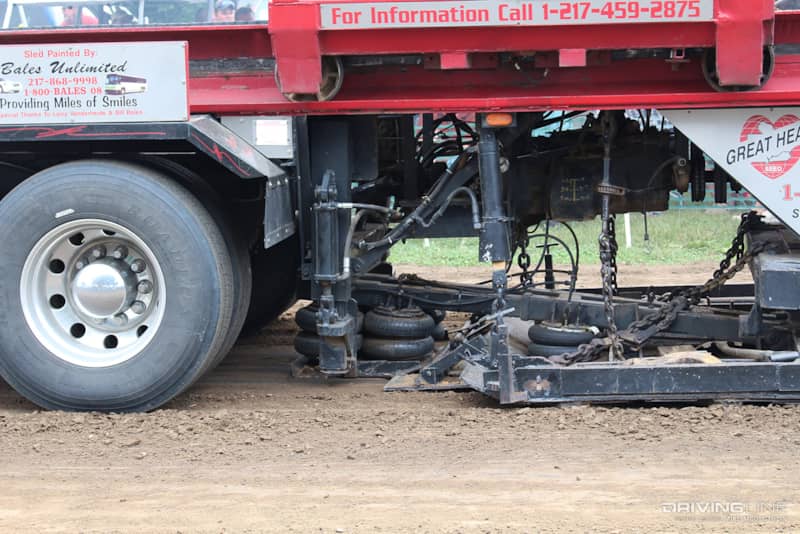
One of the more interesting aspects of sled pulling is the sled itself. Key components include a weight box, weight blocks, pan, trip, push down system, kill switch and an iron hook and chain. The weight box starts at the rear of the sled and gradually progresses forward during the course of a pull. The weight box is driven (via a series of clutches and gears) by the sled’s front-drive axle, and its transfer speed is fully adjustable.
Roughly midway through a pull, the pan drops completely to the ground, which creates friction. Once the weight box has completed its travel from the rear of the sled to the front, an air activated (shown above) or hydraulically activated push down system allows for 100 percent of the sled’s weight to be applied to the pan (which physically lifts the rear wheels of the sled off the ground). A competent sled operator will know how to configure the sled to keep trucks as close to the 300-foot mark as possible; typical winning distances range from 290 to 310 feet at most events.
Full Pulls, Floating Finishes and Pull-Offs
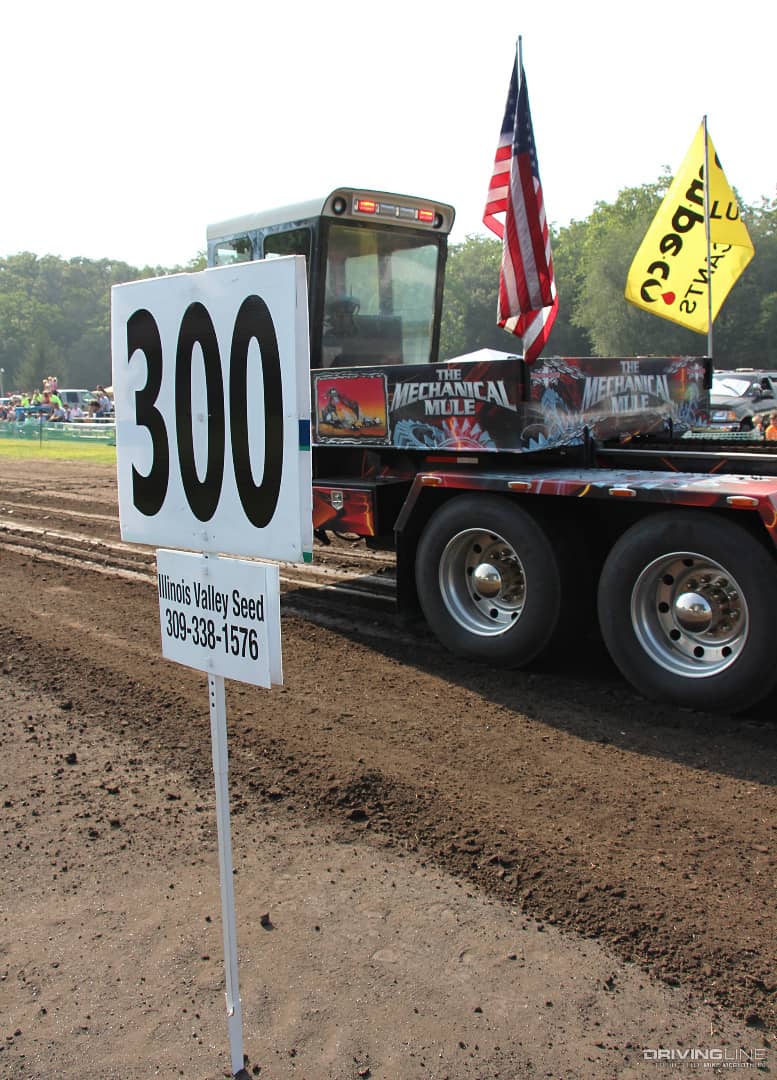
The traditional standard for a pulling track is 300 feet. At some events, 300 feet is considered the full-pull mark, while the full-pull distance is set by the first truck to pass the 300-foot mark at other venues. Under floating finish rules, the truck that travels the farthest wins, but some events pit the top two or three trucks against each other in what’s known as a “pull-off.” Pull-offs typically serve as a tie-breaker or as a way to further entertain the crowd.
Leave With Boost
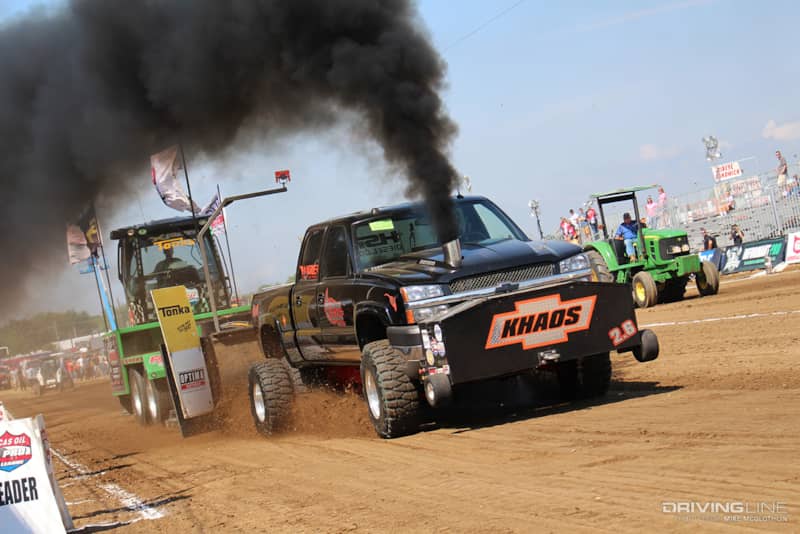
Provided you don’t pull toward the beginning of your class, observe how the trucks in front of you are reacting to the track, especially in the first 100 feet. If trucks seem to be leaving the line smoothly (i.e., no hopping), feel free to power brake your truck and leave the line with a little boost (8 to 15 psi). If the beginning of the track appears rough, it might be wise to leave the line easier and pour on the fuel once you’re through the rough spots. If the truck hops violently within the first 100 feet, let out (do not brake or the sled will rear end you!). As long as you can bring everything to a halt before the 100-foot mark, you get another crack at it.
No matter how you choose to pull, just remember that sled pulling is basically a drag race. The first one to 300 feet almost always wins.




